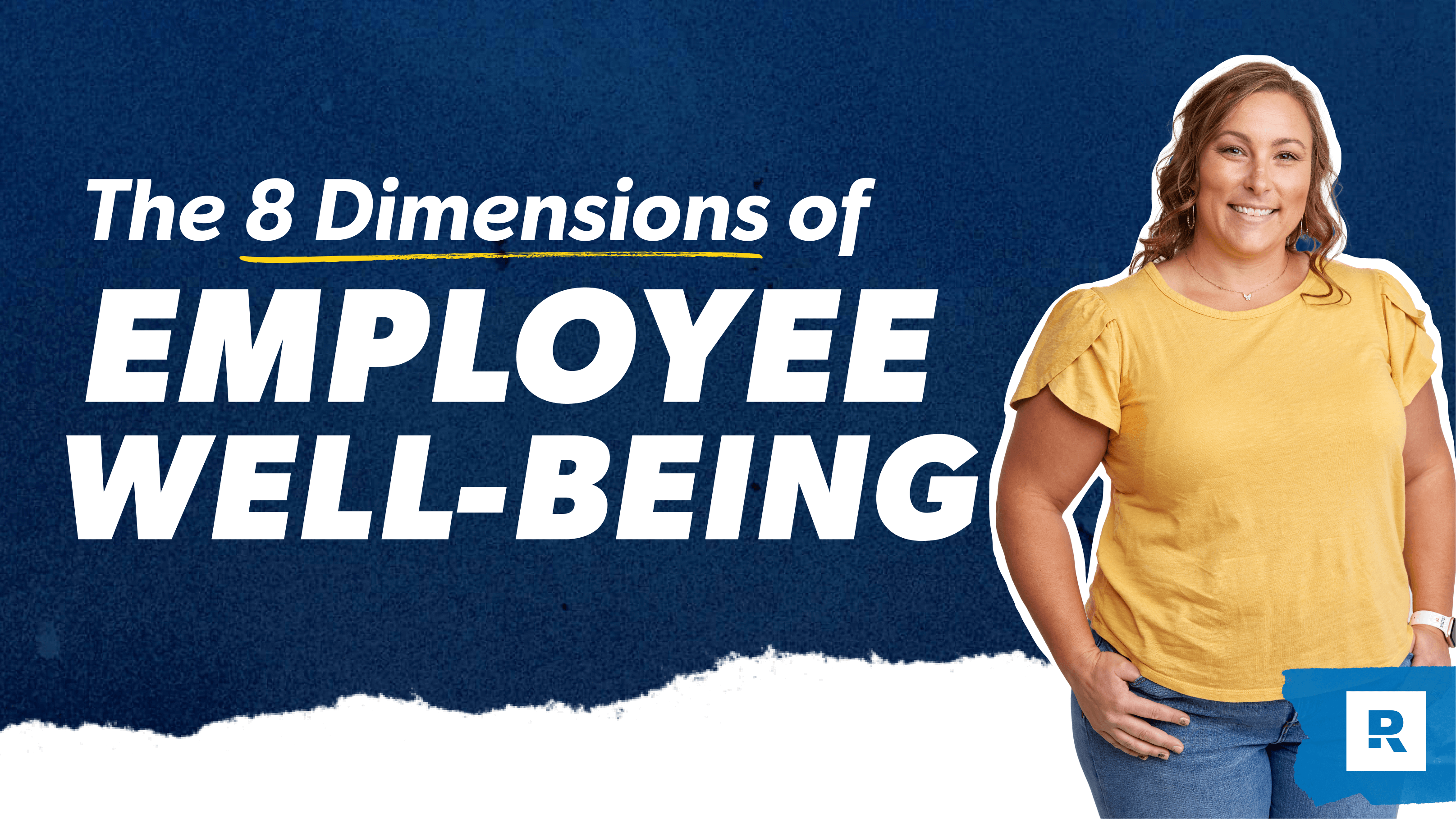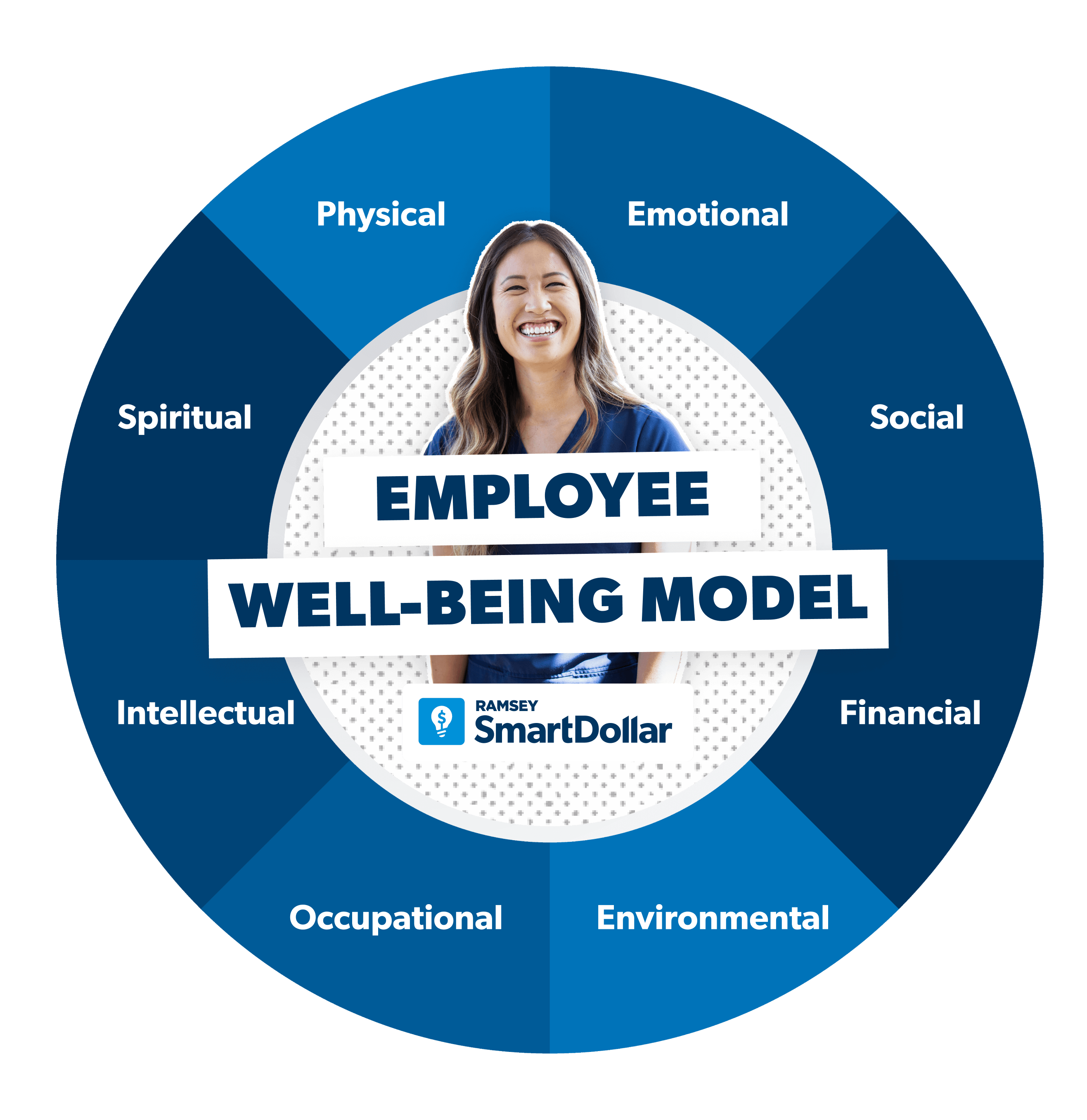
Key Takeaways
- Well-being is holistic. True employee well-being goes beyond physical health to include emotional, social, financial, environmental, occupational, intellectual and spiritual dimensions.
- Employers can shape all dimensions. Leaders influence employee wellness through benefits, resources, culture and intentional support.
- Culture and clarity matter most. Clear communication, strong relationships and alignment with company mission drive well-being more than perks alone.
Employee well-being isn’t about doing more. It’s about helping employees take the right steps to be the healthiest, most productive version of themselves they can be—and that can look different from one person to the next.
You probably thought running a business sounded fun—until you realized it would actually run you. Discover the EntreLeadership System—the small-business road map that takes the guesswork out of growth.
And for employers, that means looking at your employees’ lives and determining how you can help them fulfill every area.
The 8 Dimensions of Employee Well-Being
People are constantly looking for ways to improve their well-being. Whether it’s through diet, exercise routines or therapy, we have a natural desire to improve our lives. In 1976, Dennis Elsenrath, Bill Hettler and Fred Leafgren worked together to help people live better, healthier lives through balance and awareness. And that eventually led to the Six Dimensions of Wellness model (which includes intellectual, emotional, social, spiritual, occupational and physical wellness).1
Since then, organizations have made some adjustments to the model to include other areas of well-being. For example, employee well-being includes two more dimensions—financial and environmental wellness.
No matter which version of the model you look at, one thing is true: The individual is at the heart of every model.

Let’s dive into the what and the how of the eight dimensions of employee well-being.
Dimension 1: Physical Well-Being
What: When we think of well-being, we often think about physical health (weight, BMI and diet to name a few). And while those things are part of a person’s physical health, they’re not the entire picture. Workplace stress can impact an employee’s health. An employee’s physical well-being also includes exercise, health care, sleep and other physical aspects of their life.
How: Employers can help employees address their physical well-being in a few ways:
-
Provide reimbursement for supplement subscriptions, gym memberships or entry fees (races, contests, competitions, tournaments).
-
Offer vouchers for meeting with a dietitian.
-
Build in flexible work hours to accommodate things like doctor appointments and other physical health needs.
-
Offer health insurance coverage.
If you’re still unsure of what to offer your employees, talk with them to find out specific ways you can help their physical well-being.
Dimension 2: Emotional Well-Being
What: Employee emotional well-being is as much about regularly having a positive attitude as it is about knowing how to manage anxiety and other emotions.
How: Employers can offer access to counseling services and other mental health resources. But there is another way they can play a bigger role without adding more to their employees’ full plates: Prioritizing crystal clear communication around roles and expectations. When employees understand their roles and how they contribute to the company mission, they’re more confident and at peace—which contributes to their mental health.
Here are some ways you can support your employees’ emotional well-being through clear communication about their roles:
-
Define roles and responsibilities before you start looking for candidates.
-
Document those responsibilities in a detailed job description or role profile the employee and their leader can refer to when they have questions.
-
Provide the tools and training your employees need to do their jobs well.
-
Meet regularly with your employees to answer questions and give constructive feedback on their performance.
Dimension 3: Social Well-Being
What: An employee’s social well-being is all about their relationships at work and at home. The quality of those relationships lays the foundation for trust, cooperation and productivity.
How: Employers can make it easier for employees to get to know their coworkers. Try team-building activities, setting aside specific spaces for collaboration or gathering together, and sharing meals as a team.
And for remote employees, create virtual experiences that bring them together. Try out themed days where they learn about each other, a weekly newsletter written by multiple employees, or virtual happy hours to get everyone talking about something other than work.
More than anything else, don’t forget about team members’ families! Host family-friendly events or even build in extra days off around holidays when employees typically take time off to be with family (like the Fourth of July, Thanksgiving and Christmas).
Dimension 4: Financial Well-Being
What: Employee financial well-being involves anything that affects your team members’ money situation—income, debt, budgeting, professional growth, company benefits, retirement or health savings accounts (HSAs). You get the idea. But financial well-being isn’t about doing all the things. It’s about doing the right things at the right time.
How: The healthier your employees are financially, the better off your company will be. Financial stress can cause big declines in productivity. The best way for a business to help its employees be financially well is to invest in a financial wellness benefit. SmartDollar teaches employees how to stick to a budget, get out of debt, save for the future, and build lasting wealth. Your employees can learn how to handle their money and use money tools—like the EveryDollar budgeting app and Financial Peace University—to build healthy money habits.
Dimension 5: Environmental Well-Being
What: An employee’s environmental well-being can be affected by their physical surroundings, but the company culture can have an even more powerful influence on their performance and job satisfaction.
How: Would you rather be an employee at a company that’s all about the bottom line where profit and shareholder value are prized above all else? Or would you rather work with a team that’s united behind a mission to make people’s lives better through that company’s products or services—while making money? Most people would choose the second option. It’s important to be profitable to stay in business, but it’s hard to love a job that’s about money and nothing else.
Here are a few ways to make it happen:
-
Define your company’s mission, vision and core values.
-
Talk about the mission, vision and core values often with your employees to remind them they’re doing work that matters.
-
Hire team members who are aligned with your mission and values.
-
Hold leaders and employees accountable for upholding the company’s values.
Dimension 6: Occupational Well-Being
What: Job security. Job growth. Company culture. Job satisfaction. Workplace community. Professional development. They all contribute to your employees’ occupational well-being (aka how your employees feel about their role and future in your company).
How: When you get down to it, the best way to support your employees is with a strong retention strategy. The result? Employees who understand their roles and their opportunities for growth. They’re happy with the benefits and actually use them!
Here are some steps you can take to improve employee occupational well-being:
-
Check which perks and benefits your employees regularly use.
-
Ask employees which benefits and perks they would like to have.
-
Consider internal promotions before doing outside interviews.
-
Develop growth tracks (career plans) for every role that define how employees can grow into more senior-level or leadership roles.
-
Conduct weekly one-on-one meetings with employees to discuss their wins, losses and action steps for growth.
-
Create a rhythm of yearly reviews with an employee’s direct leaders to discuss the team member’s progress and future opportunities for growth. (Side note: Leaders shouldn’t share something new in this meeting. If an employee is struggling with something, they should already know about it!)
-
Offer professional development training for employees at all levels to help them grow their hard and soft skills.
Dimension 7: Intellectual Well-Being
What: Intellectual well-being is like physical well-being but for the mind. Instead of dieting and exercising to tone muscles, employees read, learn and explore new ideas to exercise their mind.
How: Muhammad Ali once said, “The man who views the world at 50 the same as he did at 20 has wasted 30 years of his life.” Learning new things and changing the way we think about life is critical for a healthy lifestyle. Employers can support employees’ intellectual well-being by:
-
Encouraging team members to explore new ideas (like team specific book studies that relate to the work the team does)
-
Providing learning resources and materials
-
Sending employees and leadership to helpful seminars, leadership events and other educational experiences
-
Creating opportunities for employees to share their creative outlets with their coworkers
-
Setting the example and sharing new findings with your team
Dimension 8: Spiritual Well-Being
What: Spiritual well-being is more than just practicing religion (although that is part of it). It’s also practicing personal beliefs, meditating, praying, evolving values and beliefs, and considering what’s important to each person.
How: Consider spiritual well-being from a holistic perspective and leave room for people to express their spirituality within the boundaries of the workplace.
You and Your Employees Are Worth Being Well
As Dr. John Delony always says, “You’re worth being well.” Exercising the eight dimensions of well-being doesn’t just help employees—it helps leaders like you too!
SmartDollar can help you and your business improve overall well-being. Learn how employee well-being starts with money.


